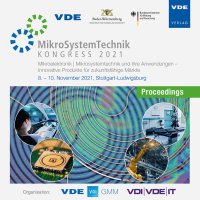Chip Integration in Thin Film Sensor Flex – Technology Developed within the “FLEXMAX” project
Conference: MikroSystemTechnik Kongress 2021 - Kongress
11/08/2021 - 11/10/2021 at Stuttgart-Ludwigsburg, Deutschland
Proceedings: MikroSystemTechnik Kongress 2021
Pages: 4Language: englishTyp: PDF
Authors:
Kaiser, Alexander; Matej, Paul; Herbort, Christian; Lang, Robert; Pursche, Oliver; Ruess, Karin; Keim, Uwe (Cicor Reinhardt Microtech GmbH, Ulm, Germany)
Hanka, Kevin; Abel, Martin (Cicor RHe Microsystems GmbH, Radeberg, Germany)
Passlack, Ulrike; Harendt, Christine (IMS CHIPS Institut für Mikroelektronik Stuttgart, Stuttgart, Germany)
Burg, Benjamin; Goettsche, Thorsten (OSYPKA AG, Rheinfelden, Germany)
Zhou, Maolei; Dietzel, Andreas (IMT Institut für Mikrotechnik, Braunschweig, Germany)
Abstract:
This article describes the results that have been obtained within the publicly funded project “Flexmax”. In the framework of 2 target applications from the medical area, we have developed a technology for the direct integration of thinned-down ASIC chips into a thin-film technology flexible circuit. This direct integration allows to maintain a very low profile for systems that are based on such a technology, and thus, to keep their flexible nature. Such thin sensor matrices or chains are able to follow the movements of an underlying human body or the deformation of a medical instrument. The ASICs provide the functionality of a local data digitalization of the analogue sensor signals and help to reduce the number of required physical connection wires, by additionally providing a serial data transmission functionality. The Thin Film Technology hereby features the benefits of using noble metals and inert materials to build the flexible circuit and the required sensors, as well as making electrical contact to the ASIC chips.


